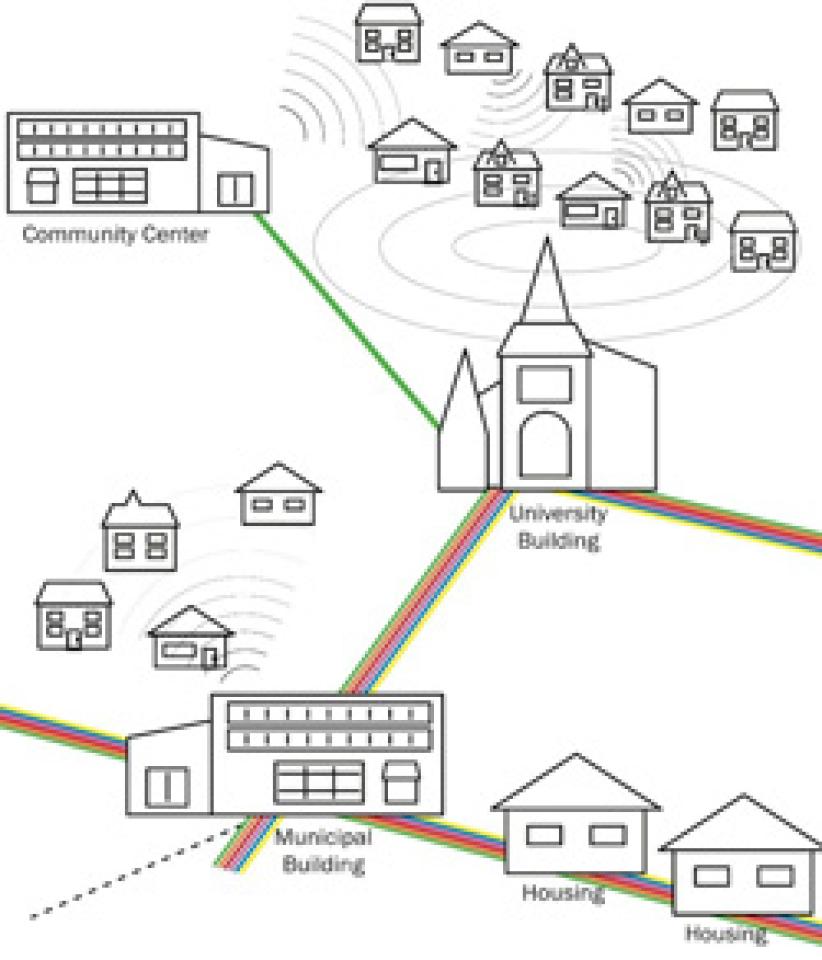Date
Image

In a report entitled "Universities as Hubs for Next-Generation Networks," the Open Technology Initiative at the New America Foundation has explored a new path for expanding community networks. The full report is available here [pdf].
This report builds on the Gig.U initiative, in which major universities are working with communities and other partners to expand access to next-generation networks in select areas. We recently wrote about a Gig.U project in Maine.
This approach encourages a very collaborative approach with lots of community input and a mix of fiber-optic lines feeding neighborhood wireless networks. Universities already need robust connections but few have been as bold as Case Western Reserve University, which initiated a project to share a gig with neighbors in Cleveland.
OTI calls on open access fiber links connecting anchor institutions that allow wireless nodes to easily connect. Planning for such interconnection upfront is far preferable to adding it after because interconnection points should be placed in convenient places for wireless transmitters.
The people at OTI have long championed mesh architectures and this report again explores the benefits of such an approach:
Moreover, communities deploying wireless mesh technology can incorporate additional service offerings into their networks. Mesh facilitates the use of a community-wide intranet, allowing all users connected to the mesh to access content and applications from local schools, universities, libraries, religious establishments, social service agencies, local governments, and local anchor institutions. To the extent that each of these components is also connected to the mesh, the intranet component of the network would be functional even without Internet backhaul connectivity, and might actually run faster than Internet connections.This is an approach for an engaged citizenry:
Unlike traditional deployment models, where buildout is dependent upon a single entity, wireless mesh requires a certain level of responsibility on the individual participant – but, more importantly, it is driven by larger community collaboration. For example, universities can offer backhaul and interconnection to research and education networks. They can also contribute by sharing their technical knowledge and encouraging student groups and/or classes to assist with mesh deployment to foster skill-sharing and real-world learning labs along with network and application development.There is a strong focus on getting buy-in from the community. We might call this the "Don't be Minneapolis" rule, where far fewer people and even city departments have used the privately owned, publicly subsidized Wi-Fi service because those pushing the network never bothered to actually get buy-in as they rushed their vision through the City Council, committing the City to years of budgetary waste and frustration. Our recent report on some of the most advanced muni fiber networks profiled three communities that built citywide networks requiring much less citizen participation, though some in Lafayette would definitely prefer to be better able to influence network decisions. The approach outlined by OTI is more focused on serving neighborhoods of people who are engaged and more willing to take a more direct responsbility for connecting to the Internet. These are different approaches suited to different communities and local assets and thus we don't think it is appropriate to suggest one is superior to the other. However, we do have some concerns about the impact of any neighborhood-by-neighborhood strategy on the need for and cost of ensuring universal service. Such concerns will be spelled out more clearly in future posts but we hope that those pursuing this approach think carefully about how to make sure all neighborhoods will eventually be connected. We have no doubt that OTI takes this very seriously and we hope those who are inspired by them do as well.
Geoterm

